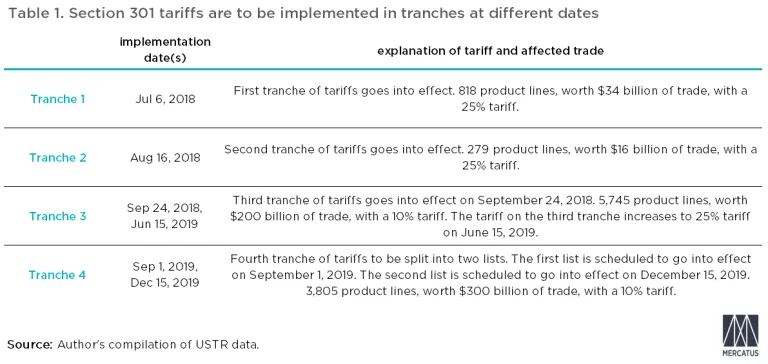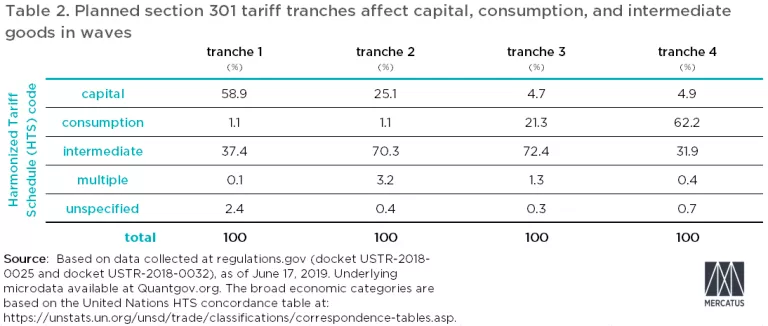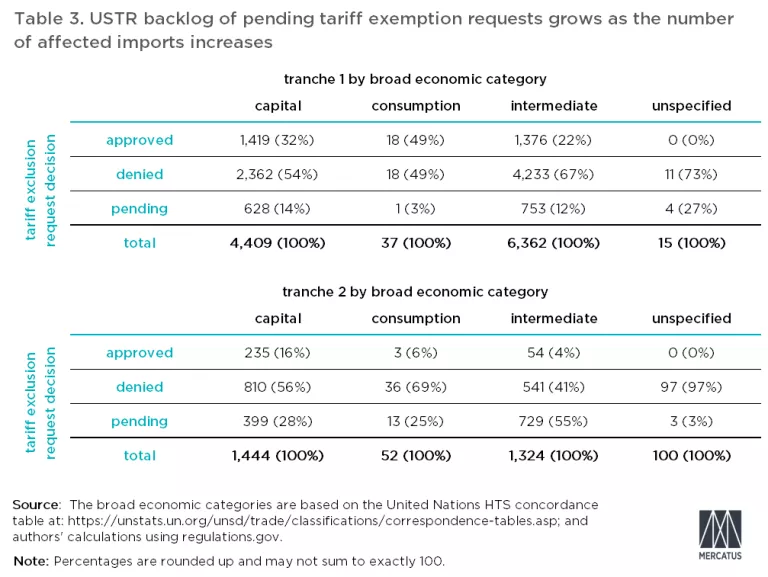- | Expert Commentary Expert Commentary
- |
Investigating Product Exclusion Requests for Section 301 Tariffs: An Update
The US-China trade talks continue in stops and starts, and tariffs remain a prominent go-to bargaining instrument for the Trump administration. Under Section 301(B) of the Trade Act of 1974 (commonly called “Section 301”), President Trump has authorized tariffs on approximately $250 billion of US imports from China, which represents nearly half of the value of US imports from China in 2018.
In administering these tariffs, the Office of the United States Trade Representative (USTR) has authority to grant relief to qualified US importers. Interested parties or trade associations may submit a product exclusion request to USTR, which IT will then review and either approve or deny.
Earlier this year, we compiled data on product exclusion requests through June 17, 2019. In this essay, we include new data on the product exclusion requests associated with the Section 301 tariffs as of July 30, 2019.
The Trump Administration has announced the China tariffs in tranches, and there have been four tranches announced so far. Recently, President Trump announced he would impose a 10 percent import duty on $300 billion of US imports from China in the fourth and final tranche.
This fourth tranche was recently announced in two lists—the first list is scheduled to go into effect September 1, 2019, and the second list is delayed and is scheduled to go into effect December 15, 2019. The reported intent of the delay of the second list, which is largely made up of consumer goods, is to help consumers. The tariffs in the fourth tranche would cover nearly the entire remaining amount of trade.
The product exclusion requests process and decisions have been processed and made public only for the first two tranches. Since our most recent update there have been a few key developments:
- As of July 30, 2019, US businesses have filed 13,743 product exclusion requests for the first two tranches of Section 301 tariffs. Of these, 23 percent (up from 18 percent since our last update) have been approved, 59 percent denied (up from 55 percent), and 18 percent (down from 27 percent) remain pending.
- Overall, the approval rate for exemptions from the China 301 tariffs appear to be lower than the approval rate for steel and aluminum tariff exclusion requests. While 23 percent of tranche one and two of the 301 tariffs have been approved (26 percent and 10 percent for tranche one and two, respectively), 49 percent of steel tariff exclusion requests and 50 percent of aluminum tariff exclusion requests have been approved.
- It appears USTR largely avoided consumer goods in the first two tranches: consumer goods represented just one percent of the products listed in tranche one and two. In the third and fourth tranches, consumer goods represent 21 percent and 62 percent of those lists, respectively.

So far, only the first two tranches have gone through the product exclusion request process, with the corresponding data made public on regulations.gov.
The request process closed for tranche one in October 2018, and there were 10,823 exclusion requests. As of July 30, 2019, 2,813 were approved (26 percent), 6,624 were denied (61 percent), and 1,386 remain pending (13 percent).
Tranche two closed in December 2018 and had 2,920 exclusion requests, of which 292 (10 percent) were approved, 1,484 (51 percent) denied, and 1,144 (39 percent) remain pending.
Since our last update, the first tranche remained relatively unchanged, with approvals and denials increasing at roughly the same rate.
The second tranche finally had their first round of approvals, but only 10 percent have been approved. Another 51 percent have been denied and 39 percent remain pending.

Table 2 reports the imports subject to a tariff in each tranche by broad economic category. One useful way to see which products have been affected by tariffs is the United Nations’ product classification known as the broad economic category (BEC). We report the distribution of products subject to a tariff by the BEC.

Table 3 reports the outcomes of product exclusion requests by broad economic category.
In our original essay, we anticipated that the number of product exclusion requests was likely to grow. This was indeed the case, and it will likely increase further, particularly if and when the fourth tranche of consumer goods tariffs takes effect. With each tranche, the share of US imports from China subject to a tariff increases.
If tranche four takes effect, in principle, by our calculations over 95 percent of US imports from China will be subject to some type of special tariff. Further, the average tariff on US imports from China could reach well above 20 percent. However, this does not take into account product exclusions, and more research is necessary to better understand the effect of such exclusions.
Photo credit: MARK RALSTON/AFP/Getty Images.